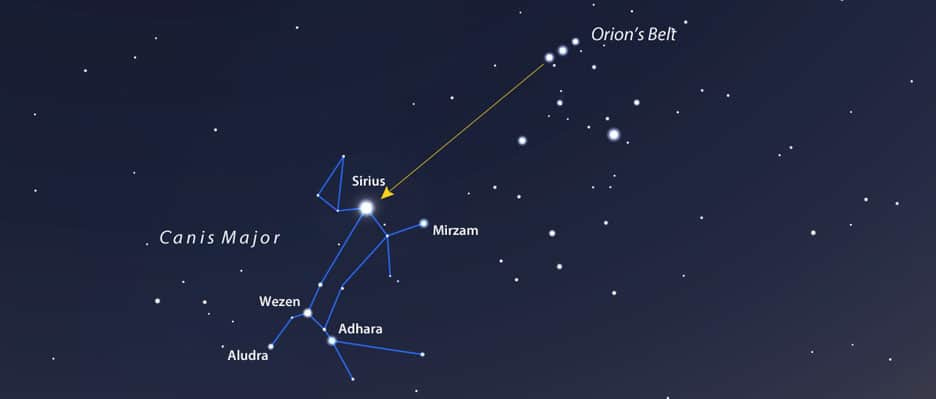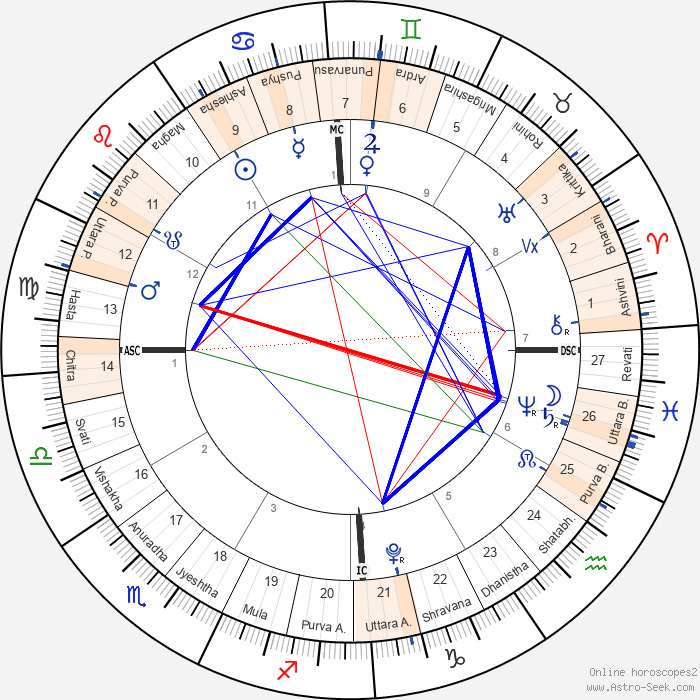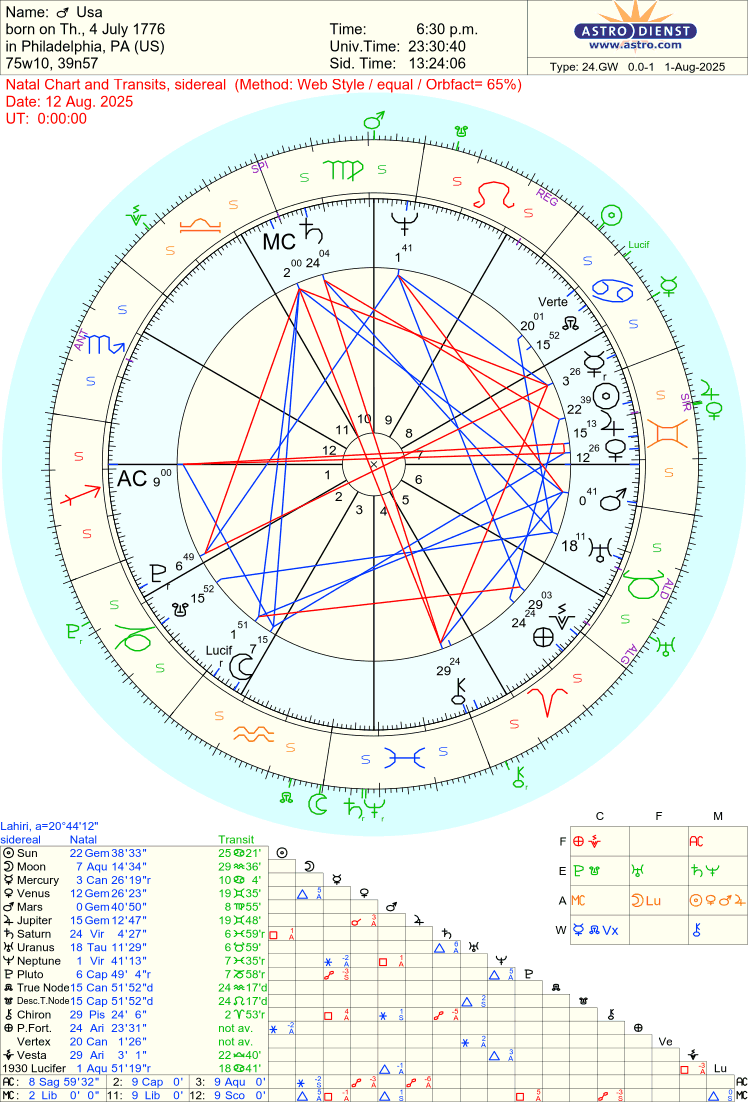Mars, Jupiter and Venus Bring the Dog Days of Summer Home with a Bang
Further punctuating the west’s mass psychosis
Note: If you want to skip directly to the predictions for the first half of August, simply scroll down to the Mars, Jupiter and Venus tag team subsection. Otherwise, if you’d like to know more of the back story, simply continue on.
TLDR: Since the time of ancient Greek civilization, precession of the equinoxes has changed the timing of summer by about 40 days. Ancient cultures used stars and their appearance (heliacal rise) in the sky to know timing for agriculture, temperature change, etc. and they used myth to keep track of this.
From stories of Sopdet & Isis about the flooding of the Nile, to the “Dog Days of Summer” mentioned in the Illiad. The issue we face as modern society is that the collective stopped watching the stars or updating the myths about 2000 years ago. Now many ancient myths are misinterpreted or hard to understand because the timing and precessional movement are rarely considered.
Those of us in the Northern Hemisphere are currently sweltering through the “dog days” of summer. Now being as I am from Texas, “swelter” is a relative term. But I can’t deny that even here in the Pacific Northwest it’s bordering on uncomfortably hot.
But what are the “dog days” of summer exactly? Where did that term come from? For the longest time, I just assumed it was another one of those quaint southern colloquialisms that make for great southern literature.
Well… not quite. The phrase's roots go all the way back to the time of Homer. And no, not Simpson; the guy who wrote the Iliad. And if you do astrology right, you can tease out quite an interesting story here. An interesting story starring (pun intended) the brightest star in our cosmos, Sirius.
In fact, tracing the “dog days” phrase's origins through myth and culture can help orient us in the great march of cosmic time, as well as give us an indication of what new myths are emerging.
Because the “as above, so below” of astrology done right is not a one-way street. We are in a symbiotic relationship with the ever-changing cosmos. We are, in fact, at once being influenced by, AND influencing new myths as we go.
Except, that is, for the last 2,000 years. At least in the west. Because you cannot actively participate in that organic, symbiotic relationship with the cosmos when you, as a culture, have divorced yourself from that relationship.
I’ll use the “dog days” phrase as an easy-to-follow example. Because it traces the movement of the brightest star in the cosmos (Sun and Moon excluded, of course), over that last 5,000 or so years. And the relationship of different cultures to her movement.
It also highlights the difference between using a fixed calendar and zodiac (Tropical system) and a “living” (sidereal) system.
Historically, the “Dog Days” concept comes from the Greeks, and specifically, Homer’s Iliad. It referred to a period from late June/early July through August, when Sirius, the brightest star in our sky (known as the “Dog Star” for its position in Canis Major), after becoming lost in the Sun’s glare for several weeks, rose again signalling the annual stretch of the most oppressive heat in the Mediterranean world.
But before the Greeks, the Egyptians had their own relationship with Sirius, born of her relationship to the annual flooding of the Nile.
For the ancient Egyptians (circa 3,000 BCE), the star Sirius was known as Sopdet, a divine celestial goddess and revered timekeeper of the heavens. Sopdet wasn’t merely another point of light in the starry sky; she represented a kind of cosmic, God-like intelligence who was intimately linked to the rhythms of Earth. Her reappearance in the pre-dawn sky each year marked the return of the annual flooding of the Nile. This predictable event was so essential to Egyptian survival that Sirius became central to both their civil calendar (marking the new year) and their spiritual, priestly (ruling class) cosmology.
At the same time, the Goddess Isis was worshipped throughout Egypt as a powerful goddess of magic, motherhood, and protection. Even as Sopdet was associated specifically with the star Sirius, and held a more astronomical, etheric role, and whose annual reappearance in the sky coincided with the Nile’s flooding. This occurrence ⸺ the rise of Sopdet/Sirius and the flooding of the Nile ⸺ was, quite literally, a life-or-death event for Egyptian agriculture and, as such, the entire culture. Over time, Egyptians began to connect Sopdet with Isis, linking the predictable, sky-based appearance of Sirius with the earth-bound mythologies of Isis (who later becomes Venus but that’s a story for another time).
In this sense, Sopdet became seen as a manifestation of Isis in the heavens, thereby providing a way for the Goddess to mark time and guide earthly cycles through the visible sky.
Again, this wasn’t abstract mysticism to the Egyptians; it was event-based agriculture. An astronomical happening tied to an earthly event that supported their very survival.
When Sirius reappeared in the pre-dawn sky each year (her heliacal rising), it marked both the Egyptian New Year and the beginning of the Nile flood season. Making it, then, one of the most important astronomical events of the ancient world.
Over millennia, however, the precession of the equinoxes caused Sirius’s heliacal rising (and her set as well, obviously) to shift later in the fixed civil calendar year, drifting out of alignment with the Nile’s annual late spring flooding.
How the Egyptians adjusted to this drift is another story. The short answer is the slow but progressive mismatch did not appear to cause a theological crisis. Instead, the Egyptians integrated the symbolic and ritual time with the practical, fixed (civil) calendar. Their cosmology was not based on literalism but on archetypal and cyclical correspondence. In short, the Egyptians found a way for a civil, production-based calendar to coexist with the ruling class’s direct connection with the stars.
At least, that is, until a more permanent fracture came along.
The Greeks, and the Origin of the Phrase “Dog Days”
The term “Dog Days” itself comes from the Latin phrase dies caniculares, meaning “days of the dog.” It first appears in Roman texts around the 1st century BCE, but the tradition it refers to predates this, as the Romans inherited the belief (like so many other beliefs) from the Greeks, who themselves linked the heliacal rising of Sirius with ⸺ not the annual flooding of the Nile ⸺ but with the hottest stretch of the year in the Mediterranean.
Same star; different culture, different time, different myth.
Homer, in the Iliad (8th century BCE), says of Sirius:
Sirius rises late in the dark, liquid sky
on summer nights, star of stars,
Orion’s Dog they call it, brightest
of all, but an evil portent,
bringing heat and fevers to suffering mortals."
Like the Egyptians, Homer’s focus here is on Sirius’s reappearance (heliacal rise), which for him symbolized the peak of summer heat in that time and place (Smyrna, which is modern-day İzmir, Turkey) and was believed to augment the Sun’s power, causing disease, drought, and lethargy.
What I find interesting here is that you can literally trace precession of the equinox through time by way of myth. But the only way you can do that is by following precise sidereal placements. Otherwise you’re divorced from the cosmos and beholden to a frozen-in-time, civil calendar.
So in quick summary we have:
Egyptian sacred usage: ~3000 BCE onward (symbolic, tied to the late spring flooding of the Nile)
Greek astronomical/literary use: ~800–300 BCE (Iliad onward), tied to the oppressive heat of mid summer in the region.
Roman codification as “Dog Days” (dies caniculares): ~50 BCE–200 CE
Math
I get that it’s not everyone’s favorite subject. But we need to have at least a thumb-rule understanding so we can flow with the everchanging cosmos. And understand why we are culturally marooned on an island and divorced from our place in the great symbiosis of that cosmos.
Let’s put the “dog days” idea to the test. From the time of Homer going forward.
First, the givens:
1. Precession rate = ~1° every 71.6–72 years (we’ll use 71.6 for precision)
2. Time span from Homer (~800 BCE) to 2025 CE = 2,825 years
Now, to figure the total number of degrees precessed, we simply divide 28257.6 years by 71.6 degrees/year to get 39.5 degrees.
This means that an astronomical event ⸺ in this instance, the helical rise of Sirius relative to an earthly event ⸺ the annual flooding of the Nile, say, or the onset of the “dog days” of summer ⸺ has to shift backward if we maintain a static, 365-day + leap year, civil calendar.
Keep in mind that even if you’ve never heard of astrology before, you, in fact, are living your day-to-day under the fixed calendar born of the Tropical astrology system.
Which is fine as it goes. Unless that is you want a true connection to self or the cosmos. For that, you need to actually converse in the precise language of the cosmos. That is, the exact positioning of stars and planets relative to their surroundings. Or, as Einstein so eloquently put it (paraphrased):
“God does not play dice with the universe.”
So, the Sun’s position relative to any fixed star (like Sirius at 20° Gemini) has shifted backward on the zodiac wheel by 39.5 degrees over that time. This is due to precession of the equinox. Just as the Spring Equinox (or any other astronomical marker) shifts over time relative to the background constellation(s).
Spring Equinox, for example, occurs at 5° Pisces in the Sidereal zodiac. Which means the Tropical zodiac is now 24 degrees removed from the actual conversation of the cosmos. So the trains run (mostly) on time. The collectives riding those trains are now 24 degrees divorced from Natural Law. And it’s showing.
Ok, great. But what does that mean? What is the conversion from zodiac degrees to days on the fixed, civil calendar?
Well, come to find out, this equates to roughly one calendar day every 1 degree of precession, OR 1 calendar day every 72 years.
So, mostly imperceivable over a lifetime. But over a number of generations, it starts to matter. And matter greatly.
Note: if you’re following along here, and you’re confused, there is a very good reason for that. It’s because the great metaphysical question of our time is rising in your awareness: can we effectively divorce ourselves from Natural Law? And the primary postulate of Natural Law, being that all things in nature are in a forever, natural flux? Nothing is alive in the Universe that is static. Everything that is alive is in a state of becoming. And yet modern humans, terrified of change and of the unknown, attempt to establish consistency out of what they see as fear and chaos.
And so man attempts to separate from, and dominate, Nature. Creating a static and fixed civil calendar that works for the orderly dealings of man operating outside of the Natural order. Crops need to be planted and harvested; the “trains need to run on time”. This is why the Tropical zodiac appealed to the western mind.
The Universe however, operates on a much grander and ever changing scale. The ancients realized this and, for a time, were able to hold the two systems concurrently. A divorced-from-the-stars system for the dealings of modern man (the civil calendar). And another for the ruling class’s connection to whatever consisted of their “other”. With the direct link to “other” coming from their direct access through the precise language of the stars. The Sidereal system.
If the name of the game is efficiency, production and profit, then there is no place for the inefficiency (from the 21st century capitalist perspective) of Natural Law. In that environment, of course a Tropical, fixed zodiac, fixed calendar system would prevail. How else to manage an empire, and later, control the masses?
But the kings, though, still required direct access to the heavens, and the answers held therein. And so, true astrology survived. Hidden from the masses.
So… if the helical rise for Sirius occurs on about August 11th, 2025 as viewed from Homer’s old stomping grounds in Turkey (38 degrees north latitude), and we subtract 40 days from that (approximating the 1 degree shift back every 72 years or Julian calendar day), we come to a date of July 1, 2025.
So this begins to make sense now. Heralding the dog days in early July makes much more sense. Because A helical rise of Sirius in todays age ⸺ about August 11th at the 38th parallel ⸺ would more signal the pending end of the dog days.
Graphic credit: https://whenthecurveslineup.com
So potentially, we could follow the lead of every great culture that preceded ours and create a new myth around Sirius. One appropriate for our times. One that uses her helical set (on or about May 25th each year at the 38th parallel) as the harbinger of the “dog days”, and her rise (on or about August 11th) signalling their pending exit. This is exactly how cultures of the past formed a relationship with the cosmos. The absence of which has pressed the western psyche into an unmanageable (at least, for the masses) psychosis.
And that psychosis is going to get a hell of a lot worse before it gets better.
The Mars, Jupiter and Venus tag team…
Take a look at the charts below. First we have the mundane chart for August 12th, 2025 at noon Eastern ⸺
And next is the U.S. transit chart for the same day (though a little earlier) ⸺
There is a ton going on with these charts, so I’ll just quickly hit the high points.
First, we have a Venus-Jupiter conjunction at 20 Gemini conjunct the U.S. natal Jupiter and Sun. And this is occurring during the period of the Sirius helical rise we spoke of above. The Venus-Jupiter-Sirius conjunction goes exact on August 11th, just as Sirius reaches helical rise at roughly the 42nd parallel (in line with, for example, Chicago, IL).
That, in and of itself, packs a wallop. Especially where this hits in the U.S. chart: the 7th house of “allies and open enemies”. Expect some kind of big move on or near this date as it relates to 7th house issues. And it’s not like we’re short on options for this energy to express. Take your pick of geopolitical and military hotspots and issues.
Sirius marks the border between an extremely volatile area of Gemini and a gentler zone. But having both transit Jupiter and Venus in the more volatile zip code for the first 12 days or so of August is something to pay particular attention to.
Also receiving an inordinate amount of energy is the Saturn-Neptune conjunction we’ve talked of so many times before. And this is parked on the cusp of the U.S. 4th house of “borders, homeland, and national psyche”. Add to the fact that Mars will be in opposition to that pairing during this 10 day window, applying pressure to the U.S. 10th (government, leadership, national status and reputation). So this will add even more fuel to the 4th house - 10th house fire currently raging in the U.S.
Just one example of how this is playing out is the fracturing of the nation (and collective psyche) over ICE and immigration. But this is only a surface level example.
It is common for the overriding theme of a period (for instance, the Saturn-Neptune conjunction theme) to go unnoticed until it is considered in the rear-view mirror. We are living through the creation of just such a theme now that will only be truly recognized about 9 years down the road when Sauren moves into square with Neptune.
Make no mistake, though ⸺ that theme is being created now.
We’ve said for the last few years leading up to this period in time that the theme would be bridges (infrastructure), boats (trade, commerce, waterways), and borders (at home, and as projected to areas under our control). The themes are rather obvious; it’s the specific event that can sometimes be difficult to parse. And a big reason why it’s so difficult to parse the specifics is because of the multi-layered cat-mouse game with credible information. Another Saturn-Neptune theme (reality vs deception).
One example is Panama. Everything about the astrological theme holds, and points to Panama as checking all those boxes. Yet, curiously enough, there is little to no info coming out of Panama the last several weeks following the suspension of civil rights in late June by the Panamanian government.
Or so the story goes. It’s anyone’s guess as to who is actually pulling the strings of the Panamanian puppet government. But what I can say is that there is a ton of astrological energy directed at Panama currently, and Panama just happens to have been enveloped in an information black hole.
In our community we go deeper into why Panama in general (and the Canal zone, specifically) is a major concern. But for our purposes here just know that there are many astrological indicators pulling our attention to that area of the world, and its effect on the U.S.
Why is Panama a concern for the U.S.? Because 40% of our imports and exports (a whopping 70% by weight) go through the Panama Canal. So it’s a major pinch-point for our supply chain.
And, as mentioned, with transit Mars applying a direct opposition to the Saturn-Neptune conjunction that is already bringing the collapse of mainstream media, an unprecedented level of collective psychosis, and ideological fatigue, you can expect that mix to be hit with a flamethrower the first 2 weeks of August.
⸺Keith




